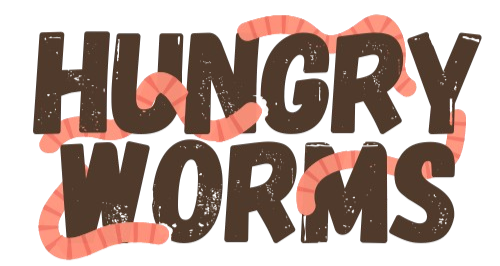How to Help Red Wigglers & Composting Worms Eat Faster
Share
Does it seem like your food waste is taking forever to disappear? Lets figure out why!
Table of contents
Dialing in Perfect Temperature
Red Wigglers are most efficient at 77°F. If possible, increasing or decreasing temperature will increase their composting efficiency.

Increasing Worm Population
Worm composting is a bit of a numbers game: more worms = more worm composting power.
Without accounting for the considerations later in this post, a pound of worms can eat around 3-4 pounds of food waste weekly.
It is possible that your expectations are too high for the little guys, so to check your if your worm population is performing as it should be:
- Do your best to accurately estimate how many worms you have
- Measure how much weight in food they are handling over 1-3 week period
- See how it compares to the general "half their weight in food daily" rule.
- If it seems to be in that range, but you want more worm composting speed, its just a matter of getting more worms (breeding your own or buying more) and possibly more space.
- If it seems way off, read on and let's troubleshoot!
Correct Worm Population Density for Vermicomposting
If you have thousands of worms, but they are spread out over a large area, it will be hard to accurately gauge their worm composting power.
The best population density for vermicomposting with red wigglers is a pound, or about 800-1,000, worms per square foot.
You should be able to grab a large handful from an active vermicomposting bin and be able to count 25-50 worms just in that one handful - as a ballpark reference.
Increase Your Worms or Decrease Space
Too few worms means that vermicomposting space isn't as efficient as it should be, and it may be hard to see the effects from the worms you already have there.
You can either increase your worm population, or decrease the space they have to adjust.
Increase Size of Worm Farm
Too many worms means that you are missing out on more worm composting speed by not using more space that you have the worms for already.
If you are seeing lots of little worms that aren't growing/fattening up after a few weeks, it means that there are too many worm mouths to feed. They are ready for a larger, or an additional worm bin.
If you don't have the space for a bigger bin, maybe consider giving away your worms to a neighbor, or selling them to make some extra cash!
The Worm Bin Microbiome
Another culprit of slow vermicomposting speeds is an un-established microbiome in the worm bin.
This is likely only the case if your bin is new - within just a month or so.

Composting Worms get nutrition from the microorganisms on the food they eat. Sterile food, or hardly microbially colonized foods, won't have any appeal to them.
This is an easy fix; go find a healthy compost pile, or a healthy soil, and add a small amount into your worm bin. After a couple weeks you should see improvements if this was the hurdle to getting your worms to eat faster.
Food Preparation and Presentation!
Have you ever wanted to be a fancy chef and charge an 300% because you present your food in an over the top fancy way?
This is your chance!
Sometimes the worms aren't eating their food as fast as their potential because the food hasn't been prepared for them. Here are the best ways to present your food waste to your worms so they get chomping right away!
Increasing Surface Area
More surface area means more microorganisms can colonize the material and more room where the worms can start to eat. You can increase surface area of the food you add by breaking/cutting it apart - most easily done with a blender.



This is especially useful for fruits and vegetables. The nutritious inside won't be accessible until the tough exterior skin decomposes - which takes a while.
Cutting your fruit, like in this picture, and making sure the "interior" is in contact with the worm bin will help the worms eat it much quicker.

Freezing your Food Waste
Freezing your food waste causes the fruit/vegetable cells to expand and burst when - increasing surface area on a microscopic level.
Additionally, freezing may kill any insect larvae on the food scraps, and is a great way to store food long term if the worm bin isn't ready for more food yet.
Precomposting
This one is a bit less applicable for most, but if you are familiar with composting, it is beneficial to compost your food waste traditionally for just about a week or two before adding it to the worms.
It may not decrease your total "waste to finished compost" timeframe, but it definitely decreases the "adding to worm bin to worm castings" time.
By letting the food waste go through a heat cycle in a normal compost setting, it will take the first big impact in the whole decomposition process, increasing microbial communities on the food waste, increasing surface area, and breaking down tough carbon compounds, making them easier for the worms to get to sooner.
Still need some troubleshooting? Send me a message!
If none of this seemed to help, reach out to me and we'll figure out what's wrong, then I can add it to this post to help others in the future!

Scott Kent
Owner of Hungry Worms. Worm farmer, soil microbiologist, and educator since 2014. Read more about me here.


